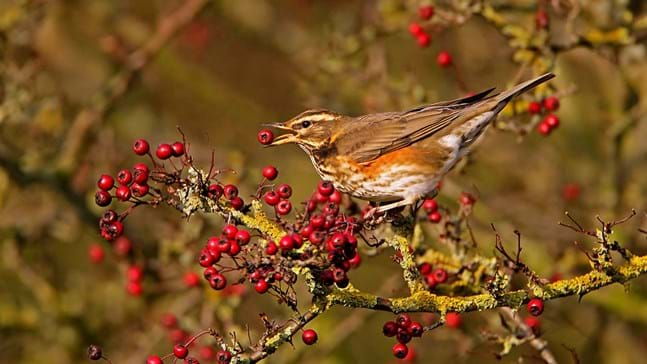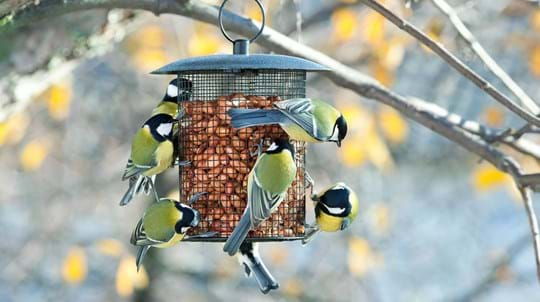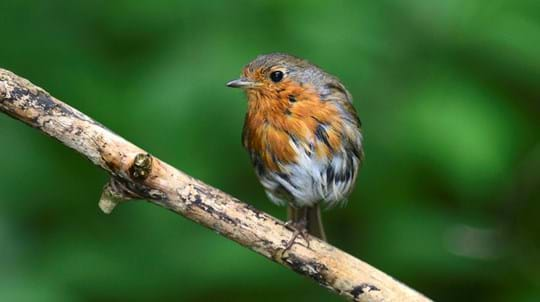
Credit: Alan Williams / Alamy Stock Photo
What do redwings eat?
Redwings feed on worms and berries, particularly hawthorn and rowan. When food is scarce they will venture into gardens and orchards in search of a bite to eat – apples are another favourite of theirs.







